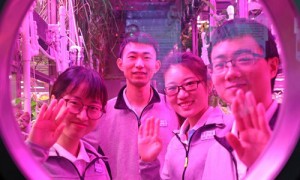By the time she was in kindergarten in the US, Jhumpa Lahiri was already thinking in ways that many other children do not. Confronted by the seemingly simple task of copying “Dear Mom, happy Mother’s Day” into a card she was making, she found herself facing a translation dilemma – how to address her Bengali mother.
“My mother was not ‘Mom’ but ‘Ma’. But I was embarrassed to insert the Bengali term I used and knew her by, the one she recognised and responded to. I was also reluctant to resort to the English term, which sounded foreign to me, and would have certainly alienated, even offended her. Revisiting that dilemma now,” she writes in 2021, “it occurs to me that it has as much to do with the act of writing as it does with translation.” Therein lies the focus of Lahiri’s latest book.
Nilanjana Sudeshna “Jhumpa” Lahiri was born in London in 1967 to immigrants from West Bengal, and three years later, her family moved to the US and settled in Rhode Island. So, as she puts it, she was born into a “linguistic world split in two” and has always felt intense pressure to be two things, “loyal to the old world and fluent in the new” (Newsweek, March 5, 2006).
Despite, or perhaps because of this, from 2012 to 2015, Lahiri decided to take her own family somewhere completely different: Rome – “to follow an impulse to express myself in a new language, to subject myself, as a writer, to a metamorphosis” (New Yorker, December 7, 2015).
Not only did she add Italian to her several other languages, but she soon found herself writing in, and translating from it as she assimilated yet another culture. In 2015, she returned to the US as a professor of creative writing at Princeton University and is now the Millicent C McIntosh Professor of English and Director of Creative Writing at her alma mater, Barnard College of Columbia University. Among other things, she is teaching literary translation and, with Yelena Baraz, a colleague from Classics at Princeton, is working on a new English translation of perhaps her favourite book, Ovid’s metamorphosis.
So Lahiri is a multi-faceted prizewinning American author who writes novels, essays and short stories in English and Italian, and who has translated three works by the Italian author Domenico Starnone into English. But perhaps most curious, in 2021 she translated into English one of her own Italian books, Dove mi trovo (2018), published as Whereabouts. Her latest book, Translating Myself and Others, brings these experiences together in a series of reflective essays on aspects of her life to date, but with a focus on how translation – and self-translation – has shaped and changed her almost since birth – as they have me.
Identity, juxtapositions and contradictions are ever-present concerns of Lahiri, as they are for me. In fact, we share many experiences. We were both born in one country and raised in others; born into one language and culture surrounded by others. As adults, we both consciously decided to immerse ourselves in a totally unknown language and culture, she Italian, I Spanish). We are both published literary translators, avid readers and teachers. These are the lacci or “ties” that bind us.
But where Lahiri and I differ significantly is that she is a writer – a magnificent writer. I cannot do what Lahiri does so well: extracts and looks at herself objectively as a third person, metamorphoses, transforms herself into a self-translator. She thereby “collaborates in a different way with one of my past selves”, partially attaining that “intimacy that can only be achieved by the collaborative task of translating, as opposed to the solitary act of writing”. More’s the pity, because her experience of translating her own work comes across as a nerve-wracking, destabilising yet ultimately character-building and exhilarating exercise.
But this is not to say that non-translators will find little of interest in Translating Myself and Others. Quite the opposite. Readers of these 10 personal essays with afterword, notes, appendices and bibliography will find themselves immersed in a voyage of discovery not just of what makes Lahiri the writer and the translator tick, but of how these two facets or “containers” inform, extend, challenge and ultimately re-create her, while at the same time providing much food for thought for the reader.
Food for thought, but also a challenge, particularly for those readers who approach reading translations hesitantly, not to say reluctantly. Lahiri has an ability to counteract, in a highly readable manner, some of the myths and beliefs connected with works in translation.
She is fully aware that many readers do not, cannot or will not comprehend what is involved in translation, and she uses this collection of essays to “teach” her readers not only what translating is, and what it takes to be a translator, but also, what a “good” translation provides for the author, the translator, and ultimately, the reader.
To Lahiri (the self-translator), each of these “participants” acquires a different reading – and understanding – of the text in question. The whole process becomes a journey of self-discovery while uncovering another author, another culture and, in a sense, another language. Come to think of it, given the picture the recent census painted of Australia’s growing multiculturalism, Translating Myself and Others seems a good fit.







